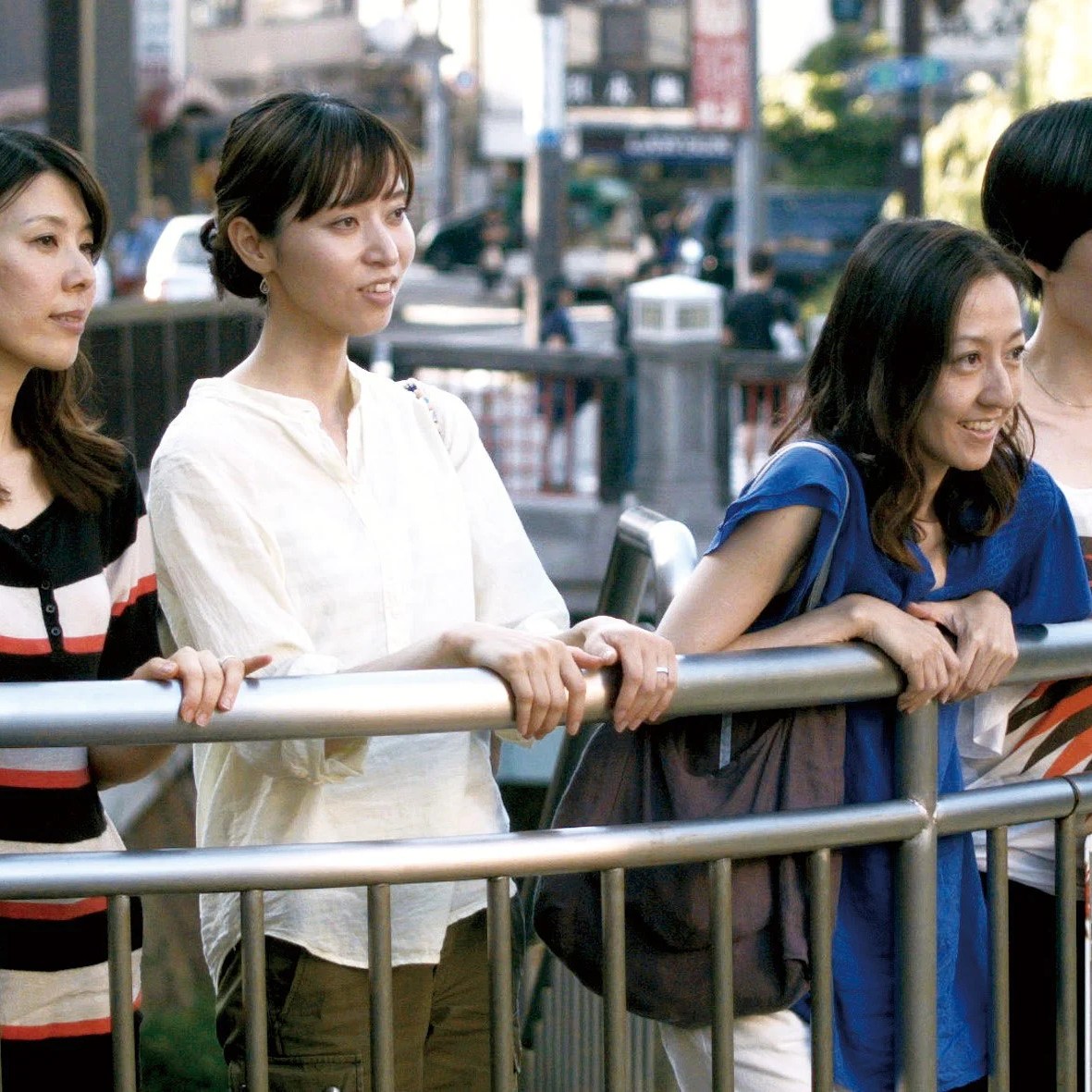Ryusuke Hamaguchi is a Japanese film director celebrated for his intricate character studies and exploration of human relationships. He gained international recognition for his film Happy Hour, a five-hour drama that delves deep into the lives of four female friends.
Hamaguchi’s films often revolve around themes of love, loss, and the complexities of human relationships. His narratives are imbued with realism, showcasing his keen observation of human behaviour and ability to depict emotional nuances. His approach to filmmaking emphasises character development, often through dialogue-driven scenes that reveal the interior lives of his characters. In Happy Hour, for instance, the lengthy conversations among the four friends slowly peel back layers of their characters, revealing their struggles and desires.
Hamaguchi’s style is visually understated yet powerful, often using long takes and minimal camera movements to create an intimate and immersive viewing experience. His films frequently feature close-ups highlighting the actors’ subtle performances, adding depth to the narrative. His approach to cinema is marked by a focus on authenticity, often encouraging improvisation from his actors to capture genuine emotions. In Asako I & II, Hamaguchi employs this technique effectively to portray the emotional journey of a young woman torn between two lovers who look identical but possess different personalities.
Hamaguchi’s ability to create deeply empathetic character portraits through his minimalist yet thoughtful filmmaking approach makes him a special director. His films, while grounded in everyday life, manage to touch upon universal themes that resonate with audiences. Moreover, his distinctive style of storytelling, marked by a preference for slow pacing and character-centric narratives, sets him apart in the landscape of contemporary cinema. With their intricate exploration of human emotions and relationships, Hamaguchi’s films offer a refreshing perspective, making him a unique filmmaking voice.

Ryusuke Hamaguchi (1978 – -)
Calculated Films:
- Happy Hour (2015)
- Drive My Car (2021)
- Wheel of Fortune and Fantasy (2021)
Similar Filmmakers
- John Cassavetes
- Jun Ichikawa
- Kiyoshi Kurosawa
- Koji Fukada
- Mia Hansen-Love
- Mikio Naruse
- Naomi Kawase
- Noah Baumbach
- Richard Linklater
- Shinji Aoyama
- Shunji Iwai
- Yasujiro Ozu



Ryusuke Hamaguchi’s Top 5 Films Ranked
1. Happy Hour (2015)
Genre: Drama, Slice of Life

2. Drive My Car (2021)
Genre: Drama

3. Wheel of Fortune and Fantasy (2021)
Genre: Drama, Anthology Film

4. Asako I & II (2018)
Genre: Drama, Romance, Coming-of-Age

5. Intimacies (2012)
Genre: Drama

Ryusuke Hamaguchi: Themes and Style
Themes:
- Human Relationships: Hamaguchi frequently delves into intricate human relationships, exploring nuances of love, friendships, and emotional entanglements.
- Conversations: His films often position conversations at the core, employing them as tools to unravel character depths and interpersonal dynamics.
- Grief and Loss: Personal tragedies, past wounds, and the ways individuals cope with them are recurrent themes in Hamaguchi’s work.
- Everyday Life: Rather than grand narratives or high drama, Hamaguchi often sets his stories in the context of daily life, portraying relatable, real-world scenarios.
Styles:
- Extended Takes: Hamaguchi’s films often feature long, unbroken takes, especially during dialogue scenes, allowing for organic performances and letting the viewer be immersed in the conversation.
- Naturalism: He leans towards a naturalistic portrayal of characters and settings, often employing minimalistic cinematography and authentic locations.
- Deep Character Exploration: Character development is a hallmark of Hamaguchi’s style. Throughout his films, viewers gain a profound understanding of the protagonists and their emotional landscapes.
- Subtle Drama: While his films delve deep into emotions, they often avoid overt melodrama, opting instead for subtlety and quiet introspection.
Directorial Signature:
- Collaborative Scripting: Hamaguchi often collaborates with his actors during the scriptwriting phase, integrating improvisations and workshops. This approach brings a unique authenticity to the dialogues and character interactions.
- Visual Restraint: Unlike directors who rely heavily on visually striking compositions, Hamaguchi often exercises restraint, letting the narrative and performances take centre stage.
- Soundscapes: Hamaguchi’s sound design is deliberate and often understated, but it plays a pivotal role in setting the tone and enhancing the atmosphere of his films.
- Emotional Resonance: Despite the understated nature of his films, they pack a powerful emotional punch. By the end of a Hamaguchi film, viewers often find themselves deeply connected to the characters and their journeys.
Ryusuke Hamaguchi: The 235th Greatest Director




